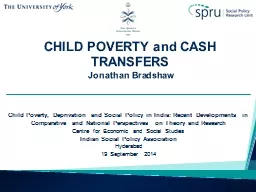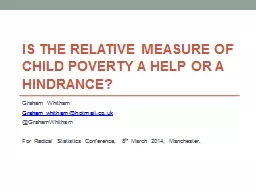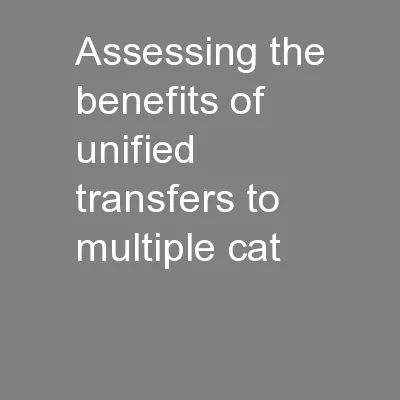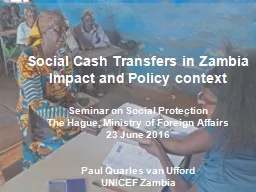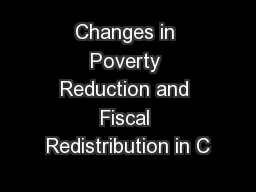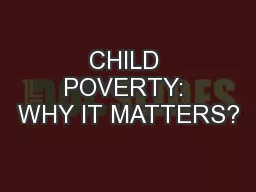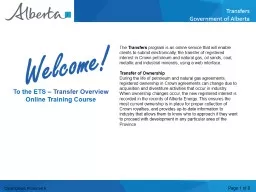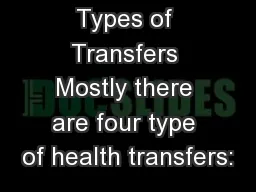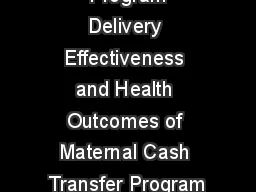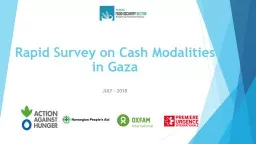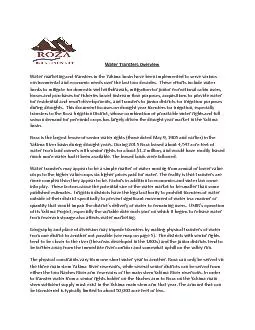PPT-CHILD POVERTY and CASH TRANSFERS
Author : test | Published Date : 2018-11-21
Jonathan Bradshaw Child Poverty Deprivation and Social Policy in India Recent Developments in Comparative and National Perspectives on Theory and Research Centre
Presentation Embed Code
Download Presentation
Download Presentation The PPT/PDF document "CHILD POVERTY and CASH TRANSFERS" is the property of its rightful owner. Permission is granted to download and print the materials on this website for personal, non-commercial use only, and to display it on your personal computer provided you do not modify the materials and that you retain all copyright notices contained in the materials. By downloading content from our website, you accept the terms of this agreement.
CHILD POVERTY and CASH TRANSFERS: Transcript
Download Rules Of Document
"CHILD POVERTY and CASH TRANSFERS"The content belongs to its owner. You may download and print it for personal use, without modification, and keep all copyright notices. By downloading, you agree to these terms.
Related Documents

